The calabash, or bottle gourd, has a long history in China. Describing the way of life among Chinese farmers 3,000 years ago, the Pinfeng chapter of the Book of Odes relates: "In July, the gourds are in abundant supply, but by August, the season is over."
Numerous legends have been passed on from generation to generation about the bottle gourd. One of them describes how it was treasured by supernatural beings in ancient times, who used it to store wines and medicines. The calabash also reminds the Chinese of one of the Eight Immortals known as Lee, who is depicted as a cripple who walks with the aid of an iron pole and carries a gourd at his waist. Through this, the bottle gourd has become an auspicious symbol.
The vegetable actually has several names in Chinese based on its variety of shapes, including hookua, paokua, hukua and pulu. Although the first three types can still be found on the market, the pulu has largely disappeared because of its awkward shape, which makes it difficult to peel. But in fact, the pulu is not only good to eat, but also looks attractive and has many uses. Cut into two sections vertically, it can be used to ladle water or rice. When the pulp is removed, it can be used as a container. Although the pulu can be carved into beautiful patterns to make an attractive ornament, it has been largely replaced by more mundane containers made from plastic and stainless steel. Many people have even forgot its original name, and refer to it as "hulu" instead.
Chung Sheng, aged 70, has felt a special bond with the pulu since he planted his first calabash vine 10 years ago. He has become famous for planting and carving pulus in various shapes which he carries on his bicycle through the streets in populous areas such as around the Tungmen market and on Chungshan North Road in Taipei. The sign on his bicycle reads: "The world of the pulu is a wonderful one, and it's up to you to enter it."
Asked about his unusual career, Chung smiles and strokes his white beard. "My motive is my love for the calabash rather than money. I hope everyone can share the joy I feel when I am with my plant." He takes particular satisfaction in presenting his beloved calabashes to friends and relatives.
On a hectare of land he has rented at Taoyuan in northern Taiwan, Chung intends to start sowing seeds for the next crop of bottle gourds. A week after sowing, delicate green sprouts appear, and as they grow, they climb up the bamboo framework he has erected. By late spring, the arbor will be covered with white blossoms, and in the fall, the plant will finally bear fruit. After being gathered, the pulu is laid in the sun for about 60 days to dry and be seasoned. Before he sells it, Chung usually ties a ribbon round the waist of the gourd. Some of his gourds are carved with Chinese characters meaning good fortune and long life, or auspicious animals such as dragons, phoenixes and cranes. Chung has worked out his own method to carve the gourd. After drawing a design, he makes a rubber mold which he presses lightly on the surface. He then uses iron wire to imprint the outline.
In Chung's apartment, which is also his studio, calabashes in various shapes and sizes, some plain and others printed vermillion, can be found everywhere. Since his children are grown up, he takes care of all aspects of his calabash business, from renting land, sowing seeds, watering, plowing and harvesting to processing and selling. His enchantment with the calabash makes all the effort worthwhile.
Chung likes to compare the form of his gourds to that of a woman-delicate, tall, short or buxom. No matter what the shape, a buyer can be found; in fact some of the quaintest gourds are the most sought after. "In my eyes, all of them are beautiful, because they are the fruits of my hard work," Chung says.
In the gourd family, freaks are given a special place. This year, Chung found one with two blossoms on one stalk, which produced a fruit shaped like a pear and having two waists. He is now planning to present it to the National Museum of History in Taipei.
Since bottle gourds are attractive in appearance and are regarded as auspicious, they are widely bought. On average, Chung sells several thousand each year, and business is particularly brisk during holidays such as Chinese New Year and Double Ten National Day, when local buyers are augmented by thousands of overseas Chinese who come to Taiwan. Students going abroad also account for quite a large proportion of Chung's customers.
[Picture Caption]
1. Gourd seeds are sown in the spring and the plant bears fruit in the fall. 2. A bottle gourd should be shaped when it is still immature to make sure it becomes an attractive ornament. 3. After being gathered, the pulu is laid in the sun for 60 days to dry and be seasoned.
1. Using a drilling machine to remove the pulp from the pulu. Chung then blocks the hole with a cork and ties a ribbon around the gourd's waist. 2. Whenever and wherever Chung sells his pulus, many curious customers gather around his bicycle. 3. & 4. Since the bottle gourd is regarded as an auspicious symbol, some of Chung's gourds are carved with Chinese characters meaning good fortune and same are painted vermillion.
1. The processed gourd can also be used as a vase. 2. 3. & 4. These are the unusual gourds grown by Chung this year.

A bottle gourd should be shaped when it is still immature to make sure it becomes an attractive ornament.
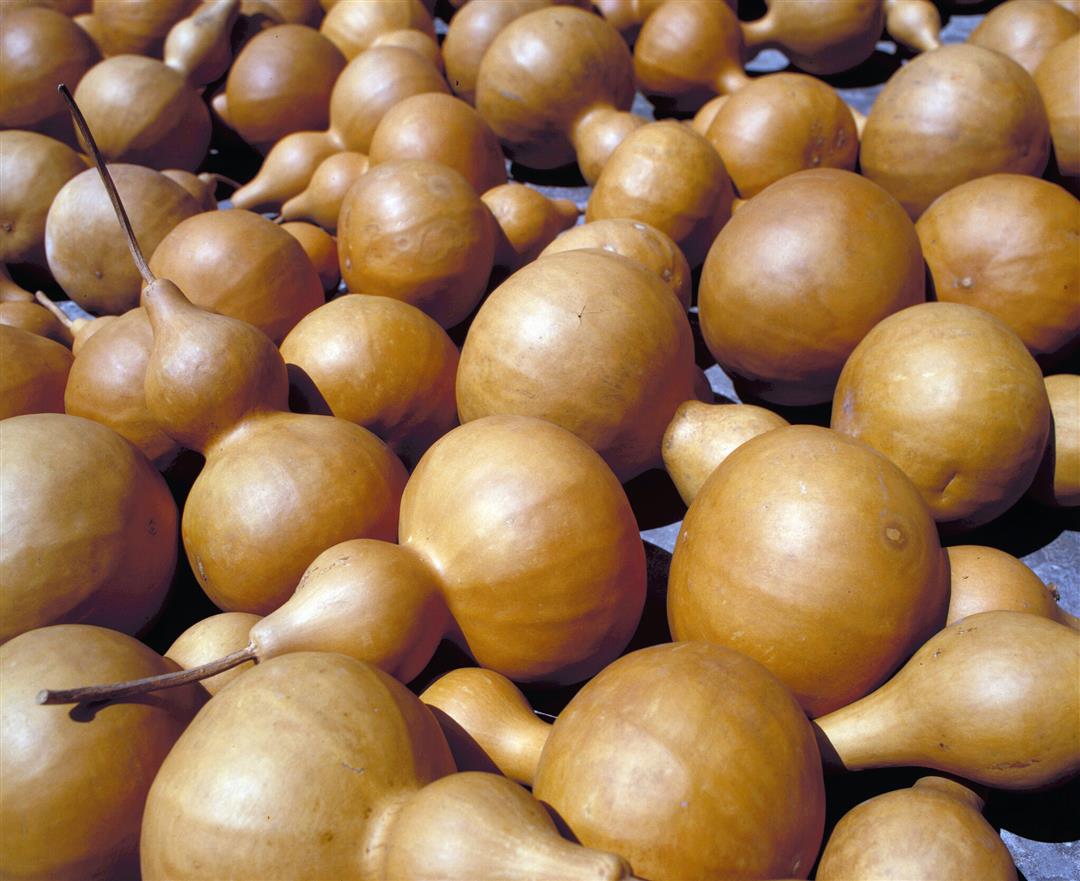
After being gathered, the pulu is laid in the sun for 60 days to dry and be seasoned.
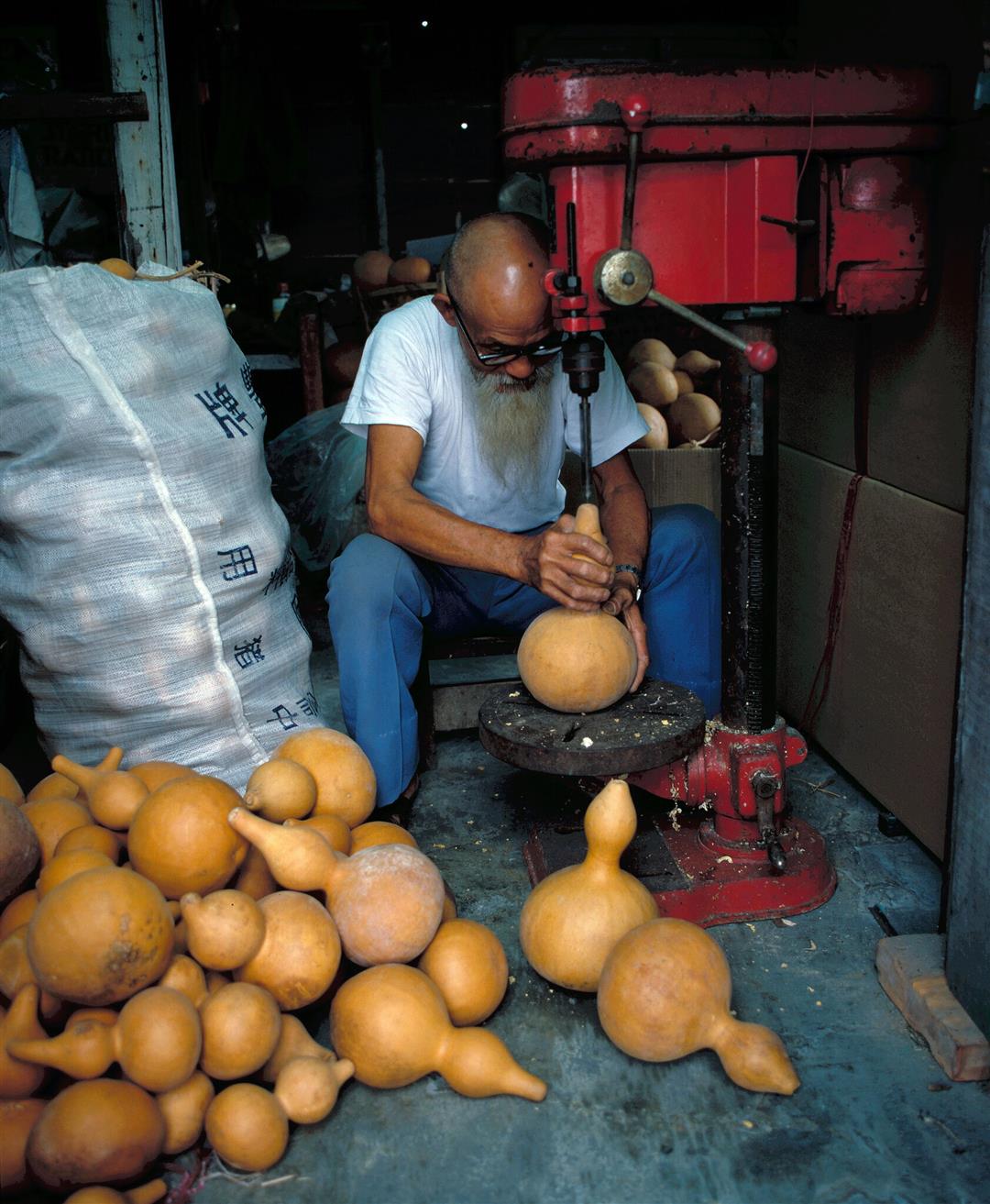
Using a drilling machine to remove the pulp from the pulu. Chung then blocks the hole with a cork and ties a ribbon around the gourd's waist.

Whenever and wherever Chung sells his pulus, many curious customers gather around his bicycle.
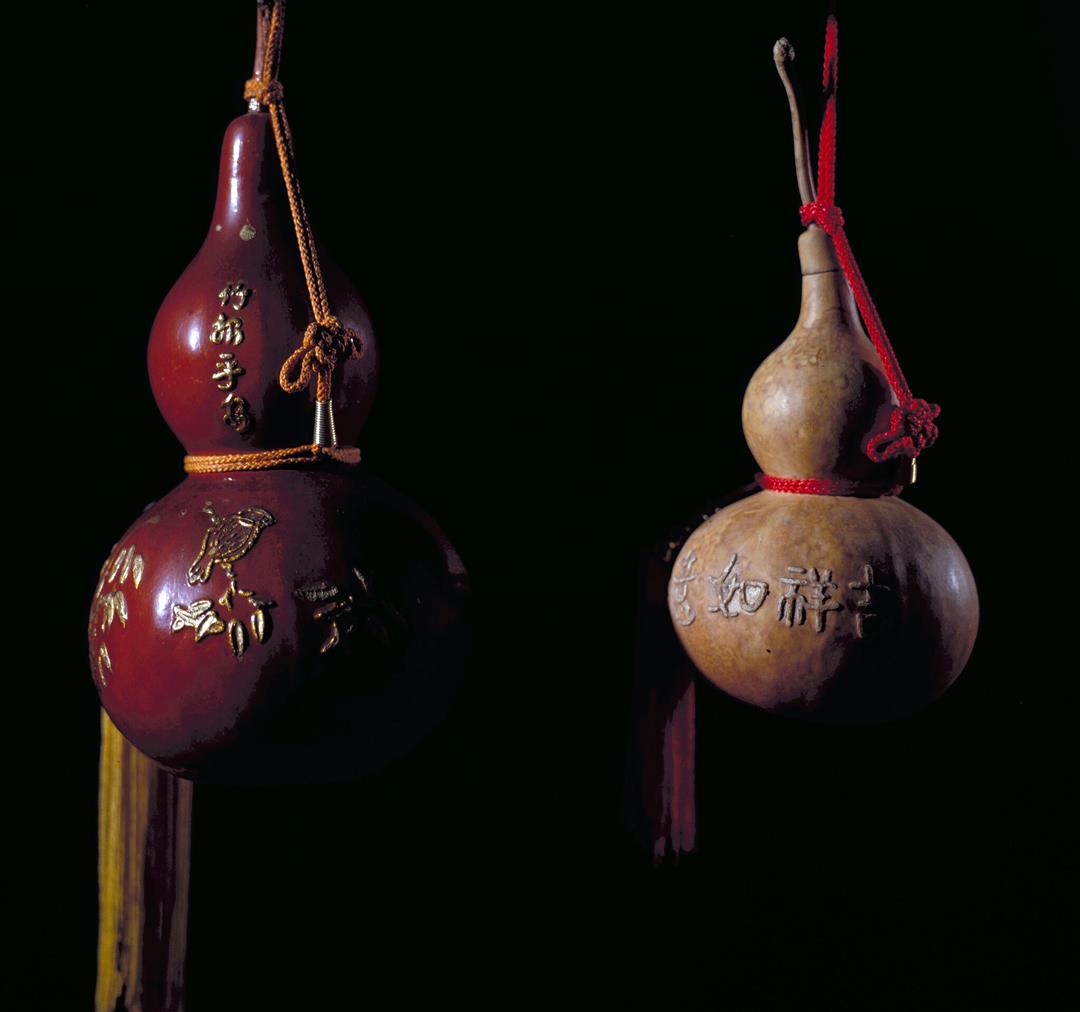
Since the bottle gourd is regarded as an auspicious symbol, some of Chung's gourds are carved with Chinese characters meaning good fortune and same are painted vermillion.
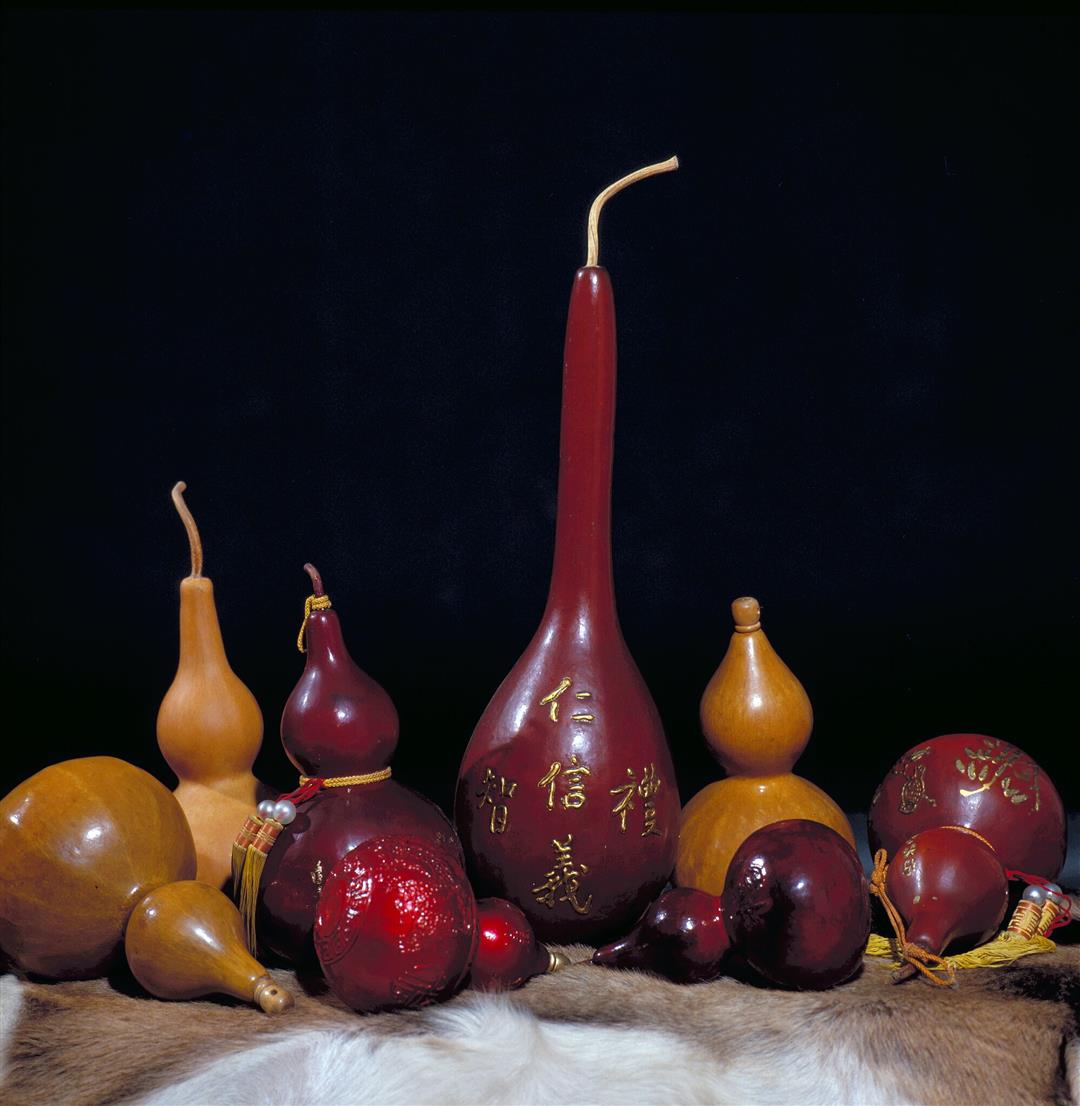
Since the bottle gourd is regarded as an auspicious symbol, some of Chung's gourds are carved with Chinese characters meaning good fortune and same are painted vermillion.
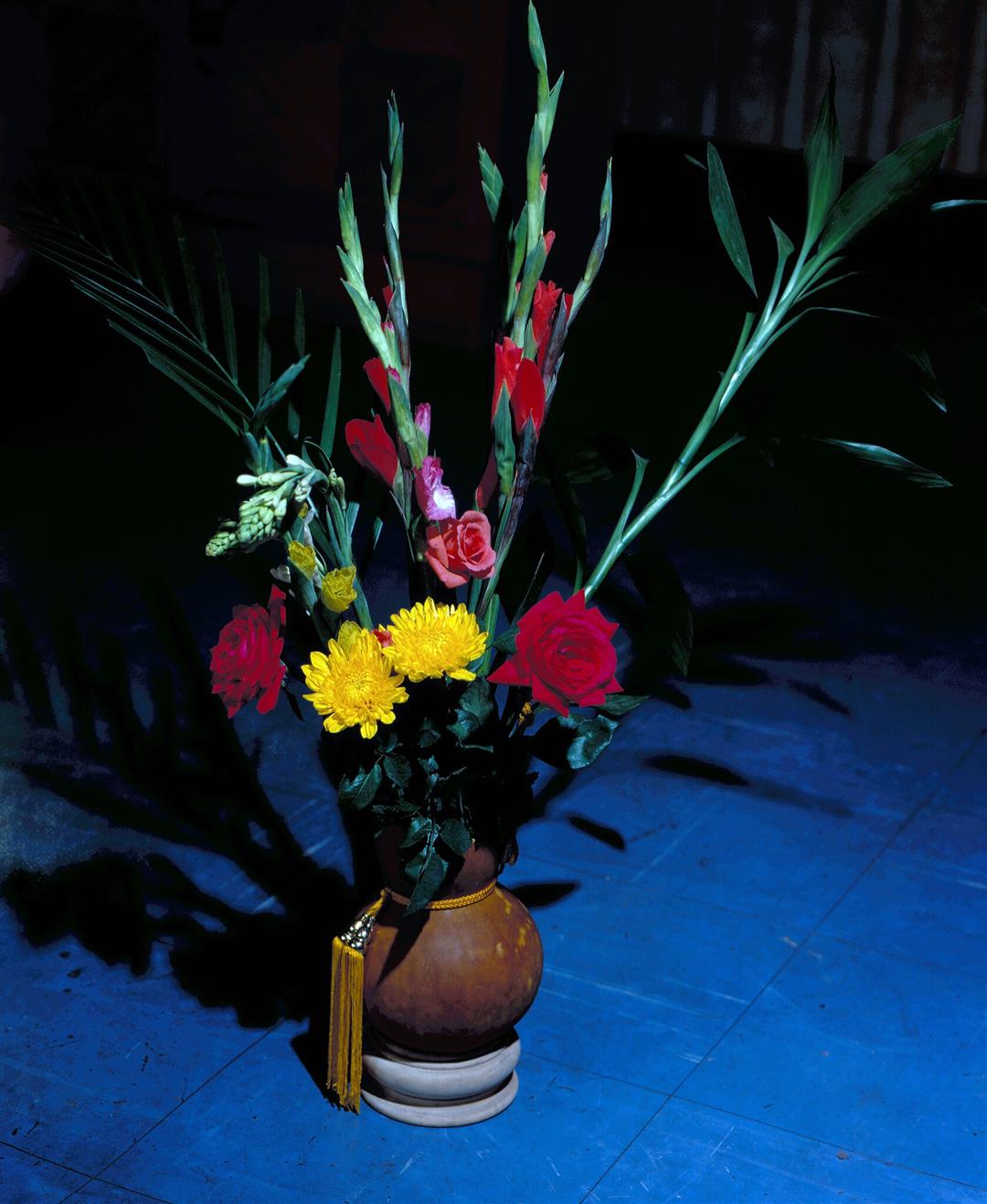
The processed gourd can also be used as a vase.

These are the unusual gourds grown by Chung this year.

These are the unusual gourds grown by Chung this year.
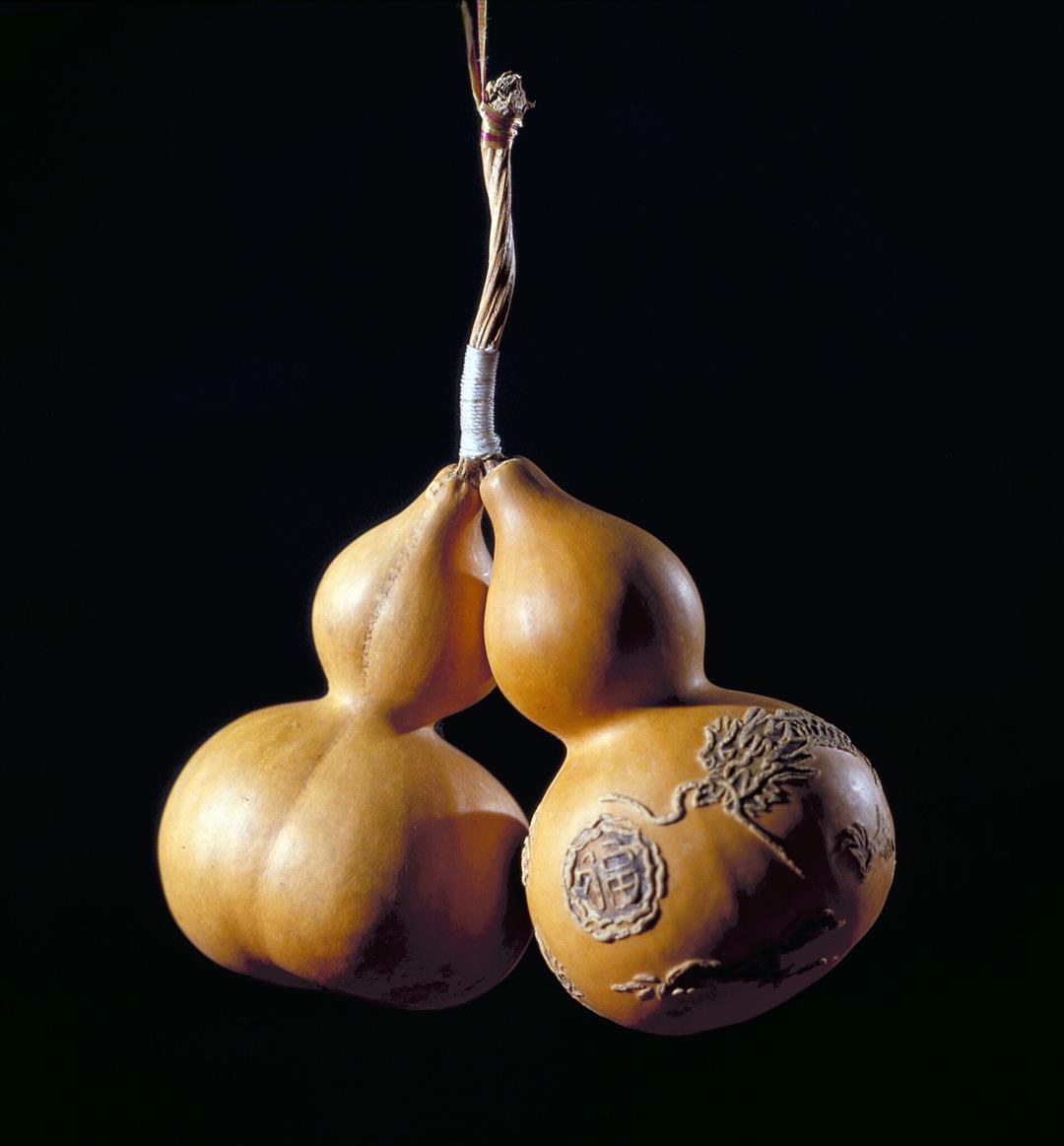
These are the unusual gourds grown by Chung this year.